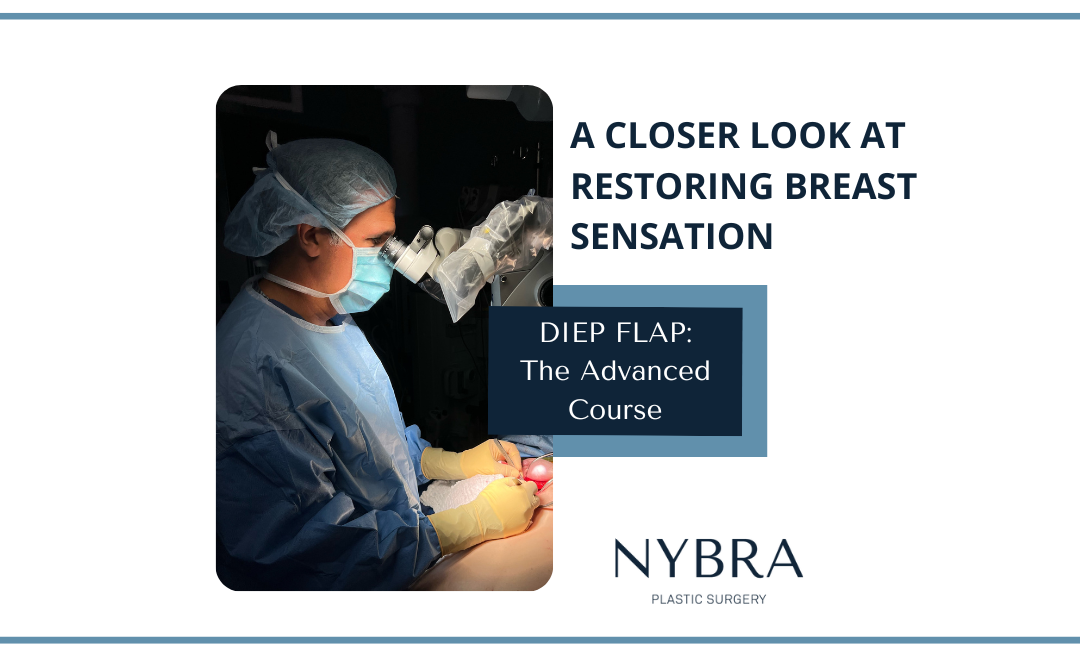A Closer Look at Restoring Breast Sensation
July 25, 2022
Breast reconstruction was once simply a matter of preserving or reconstructing a patient’s nipple and areola and creating a soft, natural breast. Advances in modern breast reconstruction and a keener understanding of the emotional concerns inherent in breast reconstruction have broadened our focus beyond these basics. Plastic surgeons now invest time in additional aspects of procedures we already perform that can improve sensation to a reconstructed breast, preserve muscle function, enhance the appearance of the body areas where tissue is taken for the reconstruction during natural tissue reconstruction (ex: abdomen and thighs), and so much more.
To offer some insight into the finer points of one of the most common advanced breast reconstruction techniques, I’d like to welcome you to DIEP Flap: The Advanced Course. This set of blog posts will transcend the basics to share high level details on essential intraoperative activities and decisions.
For our first installment we will be talking about reinnervation—restoring nerve function— of a reconstructed breast.
During a mastectomy, nerves from the chest to the breast are cut during breast tissue removal. Although there is evidence that spontaneous reinnervation (allowing the nerves to heal on their own) occurs, sensation to the breast is limited and unreliable. Rather than waiting for cut nerves to heal spontaneously, reinnervation procedures identify the cut nerves that previously provided sensation to the breast and reattach them to sensory nerves in a DIEP or other natural tissue flap or to nerve endings under the nipple and areola skin. This offers more reliable sensation restoration.
We approach nerve attachment one of two ways: directly or via nerve graft. If the sensory nerves on the chest or the flap are long enough, the two ends can be sewn together under a microscope similar to the reconnection of blood vessels. However, the nerves are often too short to reach one another. In these cases, we use a nerve graft. A nerve graft is a piece of nerve tissue that acts as a “nerve extension cord” to bridge the gap between the two ends of the nerve that need to be attached. The graft is connected to the sensory nerve exiting the chest on one end and the sensory nerve entering the flap on the other end. With time, nerve growth occurs from the sensory nerve in the chest, through the graft, and into the sensory nerve entering the flap or nipple.
It’s important to remember that nerves heal slowly. It may be months until patients experience an appreciable return of sensation. Although reinnervation procedures do not guarantee that sensation will return to normal, studies have shown that they do improve breast sensation when compared to spontaneous reinnervation. As sensation in the reconstructed breast improves, so does the patient’s sense of physical well-being and the feeling that the reconstructed breast is their “own.”
Restoring Sensation Through Nerve Grafts
Restoring sensation to a reconstructed breast is the last piece of the puzzle. For years we have been able to preserve the nipple and areola…
